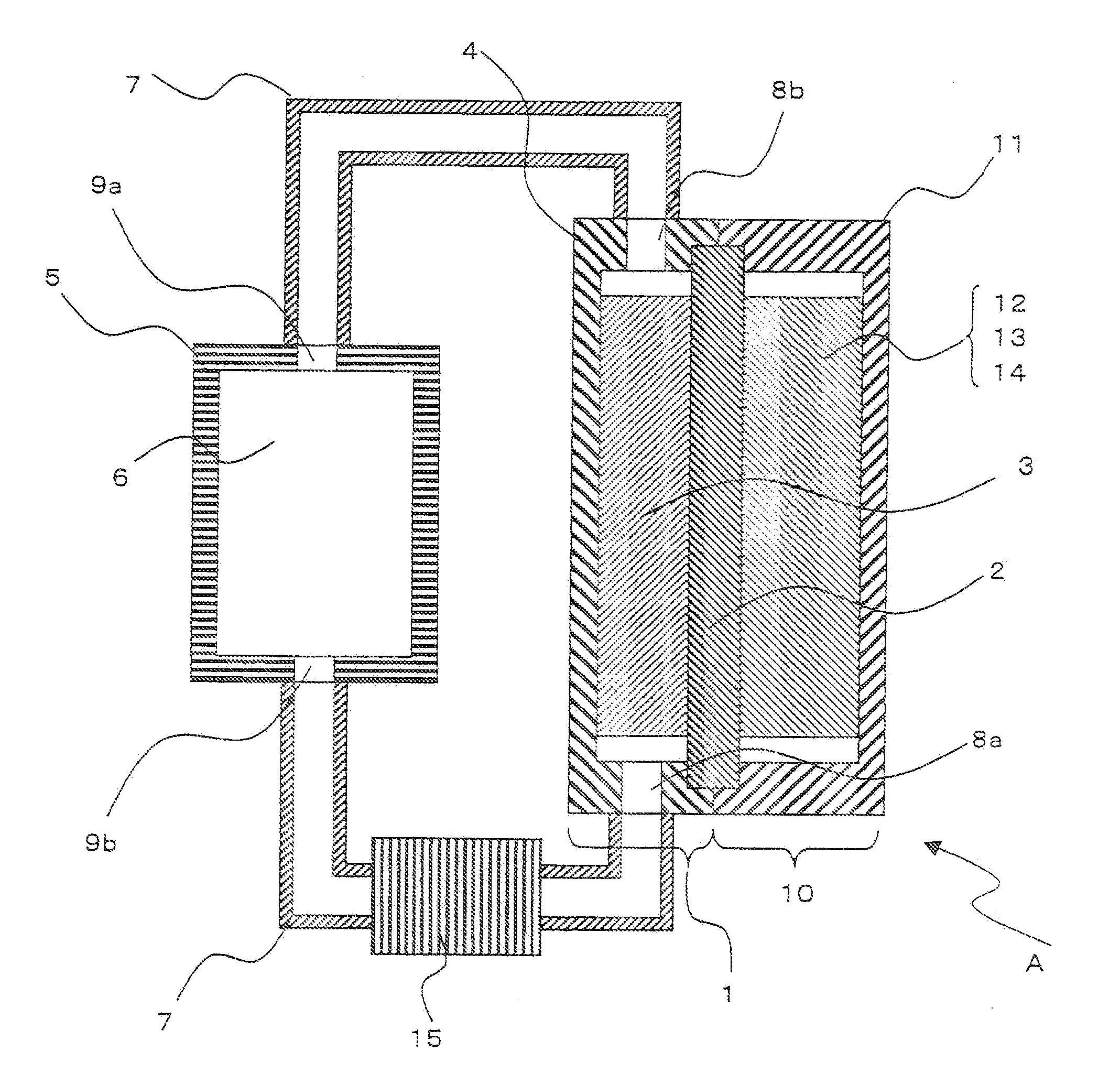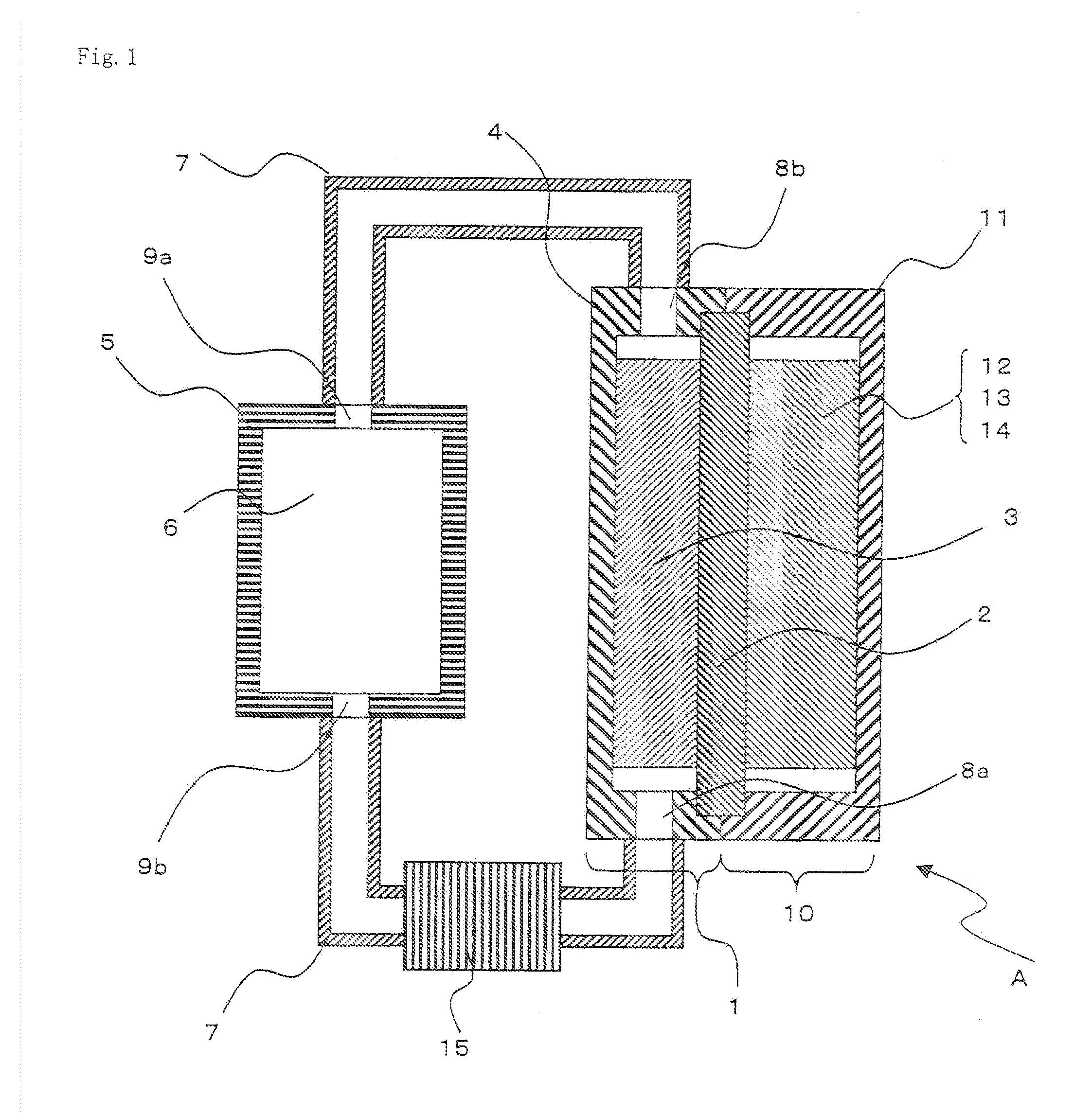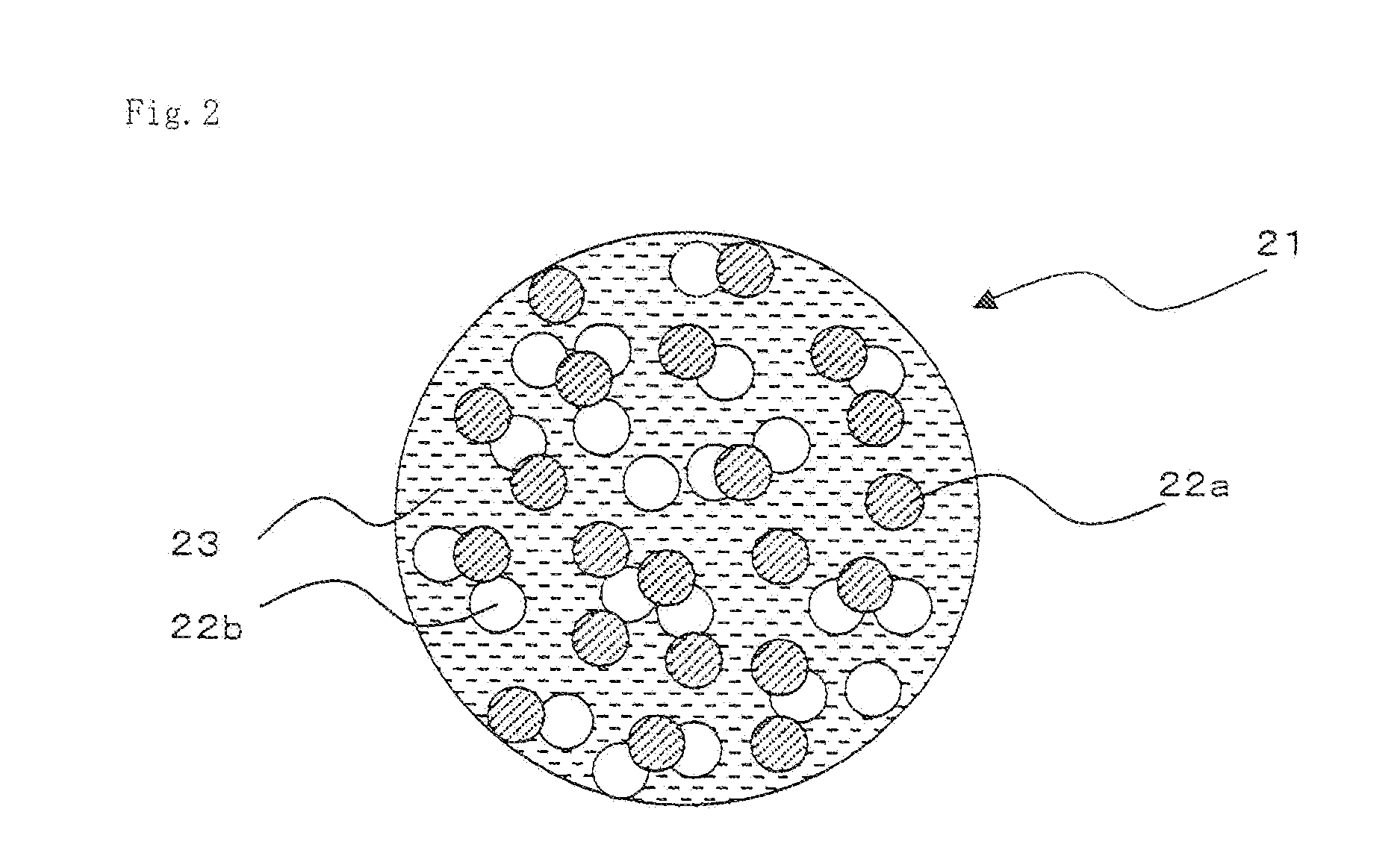Redox flow battery
a technology of redox flow and battery, applied in the direction of indirect fuel cells, non-aqueous electrolyte cells, cell components, etc., can solve the problems of electrical power to be obtained, and achieve the effects of high charge/discharge efficiency, increased collision of solid particles, and high energy density
- Summary
- Abstract
- Description
- Claims
- Application Information
AI Technical Summary
Benefits of technology
Problems solved by technology
Method used
Image
Examples
example 1
[0131]A redox flow battery shown in FIG. 1 was produced as follows.
[0132]At first, 100 ml of a mixed solvent of ethylene carbonate and dimethyl carbonate at a mixing ratio of 50:50 as a non-aqueous solvent, 5 g of a Li powder with an average particle diameter of 10 μm as solid negative electrode active material particles, and 10 g of lithium hexafluorophosphate as a supporting electrolyte were mixed in a chamber in inert Ar gas atmosphere. Next, the respective components in the mixture were dispersed by an ultrasonic probe to produce an aimed slurry type negative electrode solution.
[0133]On the other hand, 100 parts by weight of lithium cobaltate with an average particle diameter of 7 μm as a positive electrode active material, 5 parts by weight of acetylene black (Denka Black, manufactured by Denki Kagaku Kogyo K. K.) with an average particle diameter of 20 nm as a conductive auxiliary agent, and a PVdF solution (manufactured by Kureha Co., Ltd.) as a binder were adjusted and mixed...
example 2
[0141]Production and evaluation of a redox flow battery with energy density of 72 Wh / L were carried out in the same manner as those of Example 1, except that an aimed slurry type negative electrode solution was produced by mixing 100 ml of a mixed solvent of ethylene carbonate and dimethyl carbonate, 5 g of graphite (manufactured by Nippon Carbon Co., Ltd.) with an average particle diameter of 10 μm as solid negative electrode active material particles, and 10 g of lithium hexafluorophosphate as a supporting electrolyte were mixed in a chamber in inert Ar gas atmosphere and dispersing the respective components of the mixture by an ultrasonic probe.
[0142]Using a charge / discharge apparatus, the obtained redox flow battery was charged at a constant current of 0.1 A for 12 hours. Thereafter, when discharge was carried out at a constant current of 0.1 A for 10 hours, the open circuit voltage was 2.8 V. Even after 10 times of charge / discharge cycle, fluctuation of the liquid sending amoun...
example 3
[0143]Production and evaluation of a redox flow battery with energy density of 61 Wh / L were carried out in the same manner as those of Example 1, except that an aimed slurry type negative electrode solution was produced by mixing 100 ml of a mixed solvent of ethylene carbonate and dimethyl carbonate, 5 g of a lithium-tin alloy (Li:Sn=1:1 atom ratio) with an average particle diameter of 10 μm as solid negative electrode active material particles, and 10 g of lithium hexafluorophosphate as a supporting electrolyte were mixed in a chamber in inert Ar gas atmosphere and dispersing the respective components of the mixture by an ultrasonic probe.
[0144]Using a charge / discharge apparatus, the obtained redox flow battery was charged at a constant current of 0.1 A for 12 hours. Thereafter, when discharge was carried out at a constant current of 0.1 A for 10 hours, the open circuit voltage was 2.7 V. Even after 10 times of charge / discharge cycle, fluctuation of the liquid sending amount due to...
PUM
 Login to View More
Login to View More Abstract
Description
Claims
Application Information
 Login to View More
Login to View More - R&D
- Intellectual Property
- Life Sciences
- Materials
- Tech Scout
- Unparalleled Data Quality
- Higher Quality Content
- 60% Fewer Hallucinations
Browse by: Latest US Patents, China's latest patents, Technical Efficacy Thesaurus, Application Domain, Technology Topic, Popular Technical Reports.
© 2025 PatSnap. All rights reserved.Legal|Privacy policy|Modern Slavery Act Transparency Statement|Sitemap|About US| Contact US: help@patsnap.com



